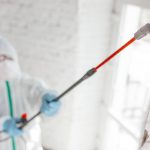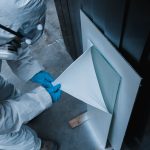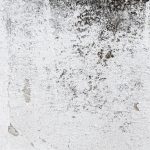
Mold can be a serious problem in homes, leading to health issues and property damage. Detecting mold early is crucial, and various mold testing methods can help you identify the presence and extent of mold in your home. Here, we’ll explore different mold testing methods and guide you on choosing the right one for your needs.
Understanding Mold Testing
Mold testing helps identify the presence of mold spores in the air or on surfaces. It can determine the type of mold and assess the extent of contamination. There are several methods for testing mold, each with its own advantages and limitations.
1. Air Sampling
How It Works
Air sampling involves collecting air from your home and analyzing it for mold spores. This method uses a spore trap, which captures mold spores on a sticky surface. The collected sample is then sent to a laboratory for analysis.
Pros
- Comprehensive: Detects mold spores in the air, providing an overall picture of indoor air quality.
- Identifies Hidden Mold: Can detect mold that may not be visible but is present in the air.
Cons
- Environmental Variability: Mold spore levels can fluctuate, making it necessary to conduct multiple tests over time.
- Laboratory Costs: Requires professional analysis, which can be expensive.
2. Surface Sampling
How It Works
Surface sampling involves taking samples from visible mold growth or suspected areas. There are different methods of surface sampling:
- Tape Lift: Adhesive tape is used to lift mold spores from surfaces.
- Swab Test: A sterile swab is used to collect samples from surfaces.
- Bulk Samples: Pieces of materials like drywall or insulation are collected and analyzed.
Pros
- Targeted Testing: Directly tests visible mold or suspected areas.
- Identifies Specific Mold Types: Helps determine the exact type of mold present.
Cons
- Limited Scope: Only tests specific areas, which might not represent the entire mold contamination.
- Destructive Testing: Bulk sampling involves removing parts of materials, which can be invasive.
3. Bulk Sampling
How It Works
Bulk sampling involves removing a portion of material (e.g., a piece of drywall or carpet) suspected of being contaminated with mold. This sample is then analyzed in a laboratory to determine the presence and type of mold.
Pros
- Comprehensive Analysis: Provides detailed information about mold contamination within specific materials.
- Accurate Results: Helps identify the exact type and concentration of mold.
Cons
- Destructive Method: Involves removing portions of materials, which can cause damage.
- Higher Cost: Typically more expensive due to the need for laboratory analysis.
4. Dust Sampling
How It Works
Dust sampling collects settled dust from various surfaces in your home, which is then analyzed for mold spores. This method provides a historical overview of mold presence over time.
Pros
- Historical Data: Reflects long-term mold exposure, not just current conditions.
- Non-Invasive: Involves collecting dust, which is less intrusive than bulk sampling.
Cons
- Less Immediate: May not accurately represent current mold levels.
- Requires Professional Analysis: Like other methods, it often requires lab analysis.
5. ERMI (Environmental Relative Moldiness Index)
How It Works
ERMI testing uses dust samples to analyze for 36 specific mold species. The results provide an index score indicating the relative moldiness of your home compared to a national database.
Pros
- Detailed Analysis: Provides comprehensive data on specific mold species.
- Standardized Results: Offers a relative moldiness score for easy comparison.
Cons
- Costly: Requires professional collection and analysis, which can be expensive.
- Complex Interpretation: Results can be difficult to interpret without professional guidance.
Choosing the Right Mold Testing Method
The best mold testing method for your home depends on several factors:
- Extent of Mold Problem: If you suspect widespread contamination, air sampling might be more appropriate. For visible mold, surface or bulk sampling can provide more specific information.
- Budget: Professional testing methods like ERMI and air sampling can be costly. If you’re on a budget, simpler methods like tape lift or swab tests may suffice.
- Health Concerns: If household members are experiencing health issues, comprehensive testing methods that provide detailed analysis, such as air sampling or ERMI, are recommended.
- Professional Guidance: Consulting with a mold remediation professional can help determine the most appropriate testing method
Case Study: Mold Testing in Cape Coral
A family in Cape Coral noticed a musty smell and visible mold spots in their basement. Concerned about potential health risks, they contacted QCI for professional mold testing. Our team conducted a thorough inspection using air sampling and surface sampling methods. The air samples revealed elevated mold spore levels, and surface samples confirmed the presence of black mold. We provided a detailed report and recommended a comprehensive mold remediation plan, which successfully restored their home to a safe and healthy environment.
Choosing the right mold testing method is crucial for accurately identifying mold problems and ensuring effective remediation. Each method has its own strengths and limitations, so it’s essential to consider the extent of the issue, your budget, and the potential health risks. For thorough and reliable mold testing and remediation, professional services are often the best choice.
At QCI, we specialize in mold testing, removal, and water damage remediation in Southwest Florida, including Cape Coral. With over 28 years of experience, our team is equipped to handle any mold-related issue, providing detailed inspections and effective solutions. Contact us today at (239) 777-2875 or visit our website at QCI Online to schedule a free mold inspection. Let us help you ensure a safe and healthy home environment.






